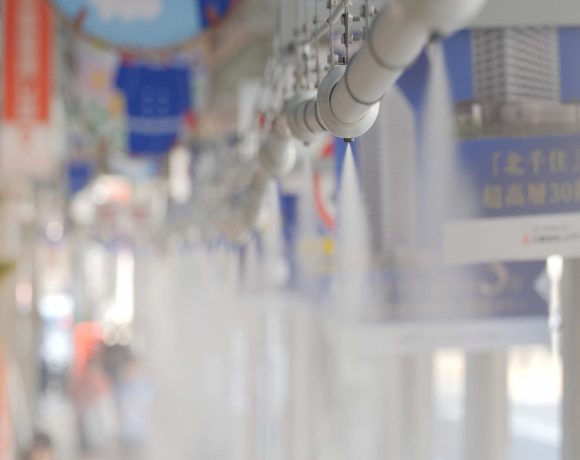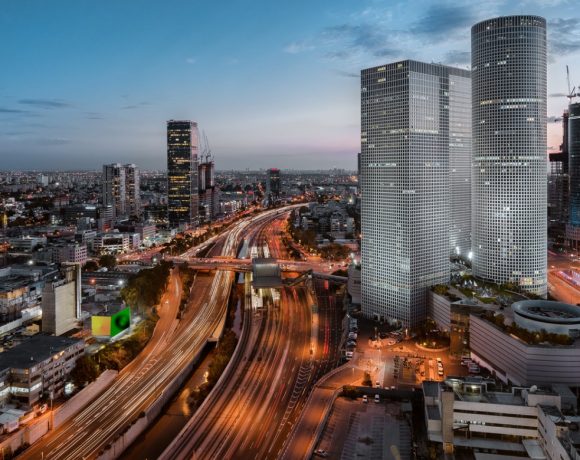- Cities have been at the forefront of the mobility disruption brought about by the pandemic and are redefining their relationship with transport through smaller vehicles. There has been an increased demand for scooter rentals and services offered by moped companies.
- Shared micro-mobility solutions may be the key factor towards introducing affordable, zero-emission, and car-free transportation options to communities that otherwise may not have access to them. This can lead to creation of jobs, education, healthcare access and other intangible benefits.
- Micro-mobility solutions have been criticised to hoard footpaths and prevent the ‘Right of Way’ for pedestrians and pose a safety hazard. As micro-mobility further evolves and urban planners rethink city design, cities must support regulation to advance the development of dedicated safety infrastructure.
When lockdowns were announced all around the world, the future of mobility seemed bleak. Public Transport (PT), micro-mobility solutions, as well as the sale of private automobiles were on decline. There were major shifts in the mobility sector with the onset of the pandemic. Cities have been at the forefront of this mobility disruption and are redefining their relationship with transport through smaller vehicles. There has been an increased demand for scooter rentals and services offered by moped companies. For example, global micro-mobility player Lime, in its recent blog, stated that in June 2020 its fleet in London hit 4.5 trips per vehicle per day, which is more than double of the pre-pandemic averages. More and more trips are originating at residential areas rather than the downtown areas, which was the norm before the pandemic. As a result, scooter trip lengths have become 50% longer than the pre-pandemic times.
With social distancing expected to be the norm in the foreseeable future, the role of micro-mobility solutions will see a steady rise. The middle-class population in cities is primarily dependent on the use of public transport, and due to the pandemic, is being forced to look at alternative ‘affordable’ and ‘safe’ options. Let me further elaborate on why micro-mobility solutions are here to stay:
1. Accessibility and inclusivity
The easing of lockdowns across India highlighted the lack of inclusivity when it comes to access to available transportation. This led to intra-city and inter-city travel becoming a challenge and the rise in traffic congestion, exclusion of the population from lower income groups and loss of jobs. The right of mobility is now seen as something which should provide accessible and affordable public transport (PT) to the masses. The pandemic has highlighted how micro-mobility can work synergistically with other modes of PT to address different mobility patterns of the public. According to research by APTA, an investment of $10 million in PT generates about $32 million in increased business sales. Also, residential property values for homes located near public transit with high frequency service ended up performing 42% better on average. Thus, PT has hidden economic value of anywhere between USD 1.5 million to USD 1.8 billion a year.
2. Low-income groups
Improved access to shared mobility services can provide access to individuals who live in communities underserved by PT. Shared micro-mobility solutions may be the key factor towards introducing affordable, zero-emission, and car-free transportation options to communities that otherwise may not have access to them. This can lead to creation of jobs, education, healthcare access and other intangible benefits. However, thoughtful planning is essential as is meticulous policy guidance, without which these services might not be accessible. Transit Oriented Development (TOD) is essential for people who do not possess the necessary infrastructure such as smartphones and internet.
3. Enhanced role of battery swapping technologies
Micro-mobility service providers are developing and using this technology to make their products more viable and accessible. Micro-mobility solutions with battery swapping technologies are time saving, reduce operating costs and enhance vehicle availability, thereby, making businesses more profitable. Battery swapping technologies can be an enabler towards longer battery life as well as providing vehicle-to-grid opportunities. This also will provide opportunities to Energy Service Providers (ESP’s) to build resilient grids at the local and national level. Battery swapping also creates viable and innovative business opportunities where the battery need not be owned by the Mobility Service Providers (MSP’s), but instead, lies with the vehicle manufacturer. This can be achieved if battery charging and maintenance stations are set up by vehicle manufacturers or specialist operators hired by the manufacturers themselves.
4. Supplementing Public Transport
Micro-mobility is steadily playing a supporting role for PT globally. A report by the mobility service provider Bird, highlighted the steps taken by five global cities of Berlin, Denver, Milan, Texas and Paris to reimagine transportation in the long term. Pop up bike lanes in Berlin, Germany is one such solution, and to further streamline this process, technical guidelines have been issues by the city government. Denver, USA started an open streets programme to create open spaces and made a few streets inaccessible to motorised vehicles. This initiative led to a 4x increase in the number of cyclists and pedestrians in the city in April 2020. In Milan, Italy city authorities have taken steps to increase the number of 35km (22 miles) streets for cycling lanes as well as new 30 km/h (20 mph) speed zones to encourage the democratisation of micro-mobility companies. In Austin, USA the authorities have flagged off the Austin Strategic Mobility Plan (ASMP). The city’s transportation plan has enabled MSP’s to work in synergy rather than in a competitive spirit. Multi-modality is thus the focus of this transportation plan, and the city has clearly set its priorities straight. In Paris, France the city authorities are creating a network of spacious pop-up bike lanes that follow routes identical to some of the busiest underground public transit lines.
5. Innovative policy measures
A 2019 survey done by Bird highlighted that urban dwellers seek increased investment and installation of wider, safer, small-vehicle lanes for riders to reduce crash risk. As micro-mobility further evolves and urban planners rethink city design, cities must support regulation to advance the development of dedicated safety infrastructure. Asia is leading this policy change and the transformation in its urban landscape has been impactful. In Beijing, China, the public sector has been allocated the responsibility of micro-mobility infrastructure and have to ensure that shared development of infrastructure, allocation of public resources, and addressing residents’ mobility needs are duly met. Rio De Janeiro, Brazil is using innovative financing where revenues from scooter permit fees, fines and advertising is routed back into a dedicated Municipal Fund for Urban Mobility that supplements infrastructure planning and improvements.
Micro-mobility solutions however should not be a hindrance for city dwellers as seen by certain dockless/free flowing services. They have been criticised to hoard footpaths and prevent the ‘Right of Way’ for pedestrians and pose a safety hazard. MSP’s thus have a shared responsibility towards the city and city dwellers. Regulators can use the measure of ‘Fleet caps’ to ensure that there is no monopoly of the micro-mobility sector along with fleet optimisation solutions. An open data sharing legislation of modal lengths and patterns can be put in place to make sure that the stakeholders are making the right interventions and dynamic approaches to policy making and legislation is taking place.
India’s urban mobility need
India needs connected, seamless and reliable mobility systems going forward. With a number of MSP’s on the rise in urban areas, an action-oriented and dynamic regulatory approach is required. India can look at these two possible business models to leverage micro-mobility services.

Reseller model
The reseller model rests upon various services from several Transport Service Providers (TSPs) that combine and provide services to end users through one interface (e.g., mobile application).

Integrator model
The integrator model contains traditional transport services extended with some extra services/features from an MSP, for example, key enabling technologies and services such as mobile ticketing and payment.
The public transport operator can focus on enriching its services by integrating other transport-related services into its regular service portfolio. These additional services can cover taxis, carpooling, city bikes and some inclusive digital services by the MSPs, e.g., mobile ticketing and payment, along with multimodal planner and (re)routing. This will be a dynamic approach towards providing efficient transportation solutions through use of fleet utilisation of all the mobility options available at a given time in a city.
The mobility market is all set to grow and diversify into different segments and models. With the increasing demand for last-mile connectivity all around the world, the scope for integrating micro mobility solutions will be on the rise. Disruption clearly has led to innovation and we can expect further integration of technologies globally.






NO COMMENT